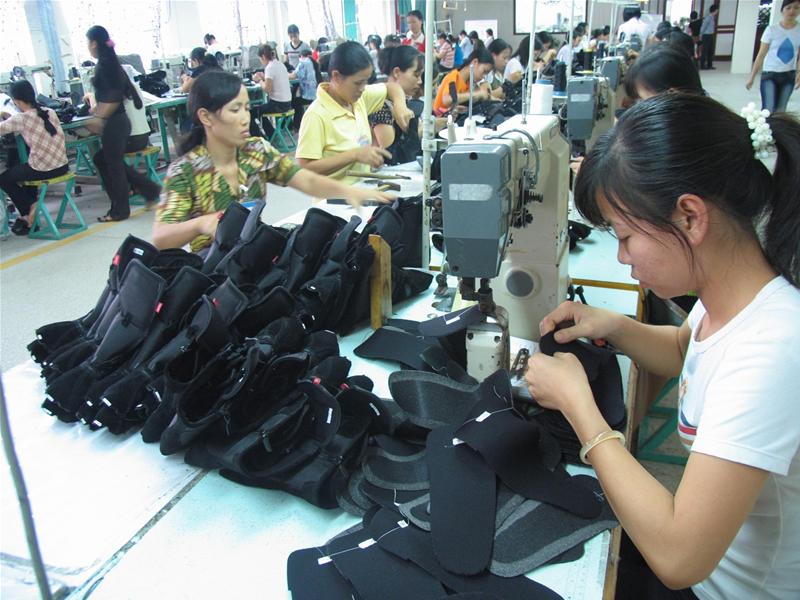
| Bright prospect for exports in 2010 | |
Vietnamese businesses are very active when dealing with importers and promoting trade in future potential markets. However, businesses need to work with each other, as well as with leading importers, if Vietnamese products are to gain a firm foothold in big overseas markets. Positive signs Vietnam aims to earn USD64.68 billion from exports in 2009, up 3 percent from 2008. However, by September, exports had reached only USD41.7 billion, down 14 percent compared to the same period last year. Exports of agro-forestry and seafood products are estimated to be USD9.2 billion, accounting for 22 percent of total exports, down 11.8 percent in value. These products tend to increase in both price and volume. Spain’s announcement that Vietnamese tra and basa fish meet the EU’s food hygiene and safety standards will make it easy for these products to penetrate the market. In addition, the Republic of Korea, the Middle East and other exporters will barely meet their domestic demand in the remaining months. Vietnam’s exports in 2010 are expected to increase by 6 percent compared to 2009. Minister of Finance Vu Van Ninh has expressed his hope that demand will grow next year thanks to the gradual recovery of the global economy. Judging form the current capital and growth balance, the Government’s proposal of 6 percent of export growth for 2010 is feasible. Nguyen Duc Kien, member of the National Assembly’s Economic Committee argues that the world economic recovery will drive prices up. Vietnam’s export volume for 2009 is higher than 2008. As higher prices push the export value up, this means export growth can surpass 6 percent. Vietnam does not need to achieve the export target at any cost, but the estimated growth will help the country balance imports and exports to prevent a trade deficit. Mr Kien says the prospect for Vietnam’s exports in 2010 is bright as many countries in the world have adjusted their GDP targets. Vietnam can make full use of this advantage to boost the export volume of value-added products. Sharing the same view, deputy Pham Thi Loan from Hanoi says that countries around the world are recovering from depression. With the US and EU economies starting to hum, Vietnam’s export markets will soon pick up. Active search for markets The second Government stimulus package will help businesses boost exports but it does not need to do it at any cost, if the value of exported products goes up. The Government and National Assembly are aiming for an increase in value, not just in volume. Mai Huu Tin, a deputy from Binh Duong province, says businesses are happy with the second stimulus package even though it is not as comprehensive as the first one. Some people do not like the package because the Government cannot provide support for long. However, to help export businesses, the Government needs to pay more attention to the big issues, such as the country’s infrastructure, traffic congestion, and customs and tax procedures. According to the latest statistics, garments surpassed crude oil in export value in 2009. Mr Kien says that next year’s crude oil exports will decline when the Dung Quat Oil Refinery Factory is put into operation, with a capacity of 3-5 million tonnes per year. The important thing is to strengthen traditional markets and seek new ones. Exporters should conduct surveys on customer demand in the post-crisis period to devise suitable plans. Similar surveys should be carried out in new markets, such as Africa and Latin America. Businesses themselves should develop production plans for 2010, Mr Kien says. | |
| VOVNews |
